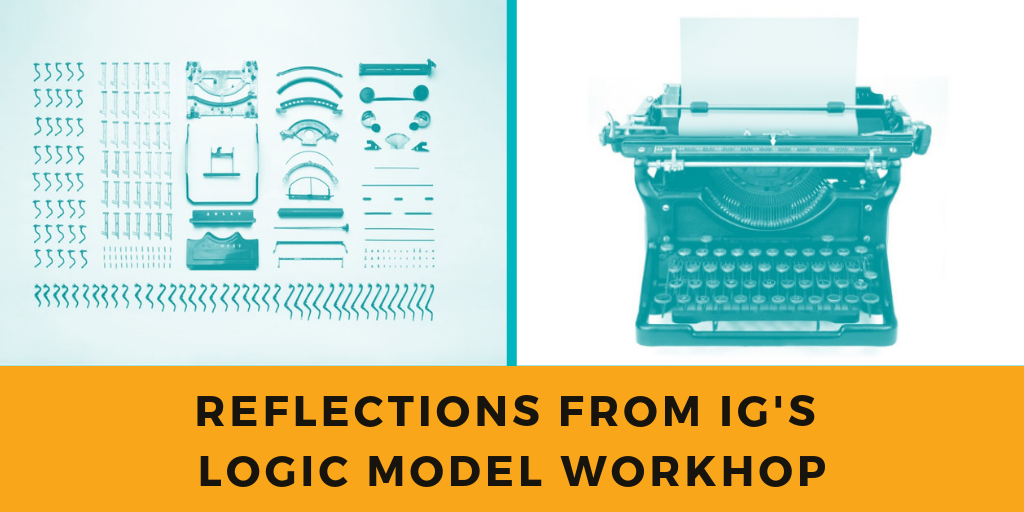
Hey! Courtney Clingan here – I’m a Senior Consultant at The Improve Group, and I’ve become known around the office as IG’s “Logic Model Maven!” These popular planning tools help organizations produce a concise visualization of all of a program’s components and how they fit together to make change and achieve program goals.
You may be familiar with logic models (and how they can benefit organizations) from your day-to-day work, a past post from IG, or you may have been part of the lucky group last month who attended IG’s Logic Model Workshop. We had several organizations ranging from nonprofits to local governments spend a half-day at the IG office to learn the “why” and “how” of using logic models to transform programs and organizations into well-oiled machines.
We appreciate everyone who attended. Here are a few of my reflections from the Workshop:
- When I first learned about logic models in graduate school, I mostly just went through the motions. I was sold after I helped organizations develop them with use in mind. I saw that same shift happen during this workshop: It was exciting to watch participants’ thinking evolve from “What do I need to put in this column?” to “How am I going to use this going forward?”
- The workshop attendees came from organizations working in a variety of topic areas and with programs at different stages (from planning to well-established). The difference in focus areas and timelines made for an interesting mix of perspectives. I enjoyed that the participants prompted and learned from each other! We structured the workshop around a mix of content learning and time for people to craft their own logic models.
- I went into the workshop hoping everyone would leave the room with a solid draft logic model and a clear understanding of what they would need to do to finish it. For the most part, we succeeded. Participants from one organization even stayed afterward for office hours so that we could refine their drafts. Looking ahead, it was inspiring to hear everyone share concrete ideas for engaging stakeholders at their organizations. That’s a critical step to building shared ownership and getting buy-in to ensure that a logic model remains up-to-date. These tools benefit from communication, diverse perspectives, and sharing assumptions.
- It was rewarding to create an environment in which people felt comfortable sharing – remember, making logic models is art and science. Plus, I think it’s important to teach organizations the skill of evaluation, particularly because some might not have the time or resources to collaborate on a full project with IG. I hope we can do it again, and I already have a few ideas in mind for future workshops!
 Help inform future IG trainings!
Help inform future IG trainings!
Are you interested in future trainings from IG? We are gathering feedback from our followers to better understand your needs and what things may appeal to you in future offerings. Please take a minute to fill out this short survey and let us know! It gives you a chance to suggest future learning opportunities and considerations for us to make and helps us maintain our commitment to community responsiveness.
